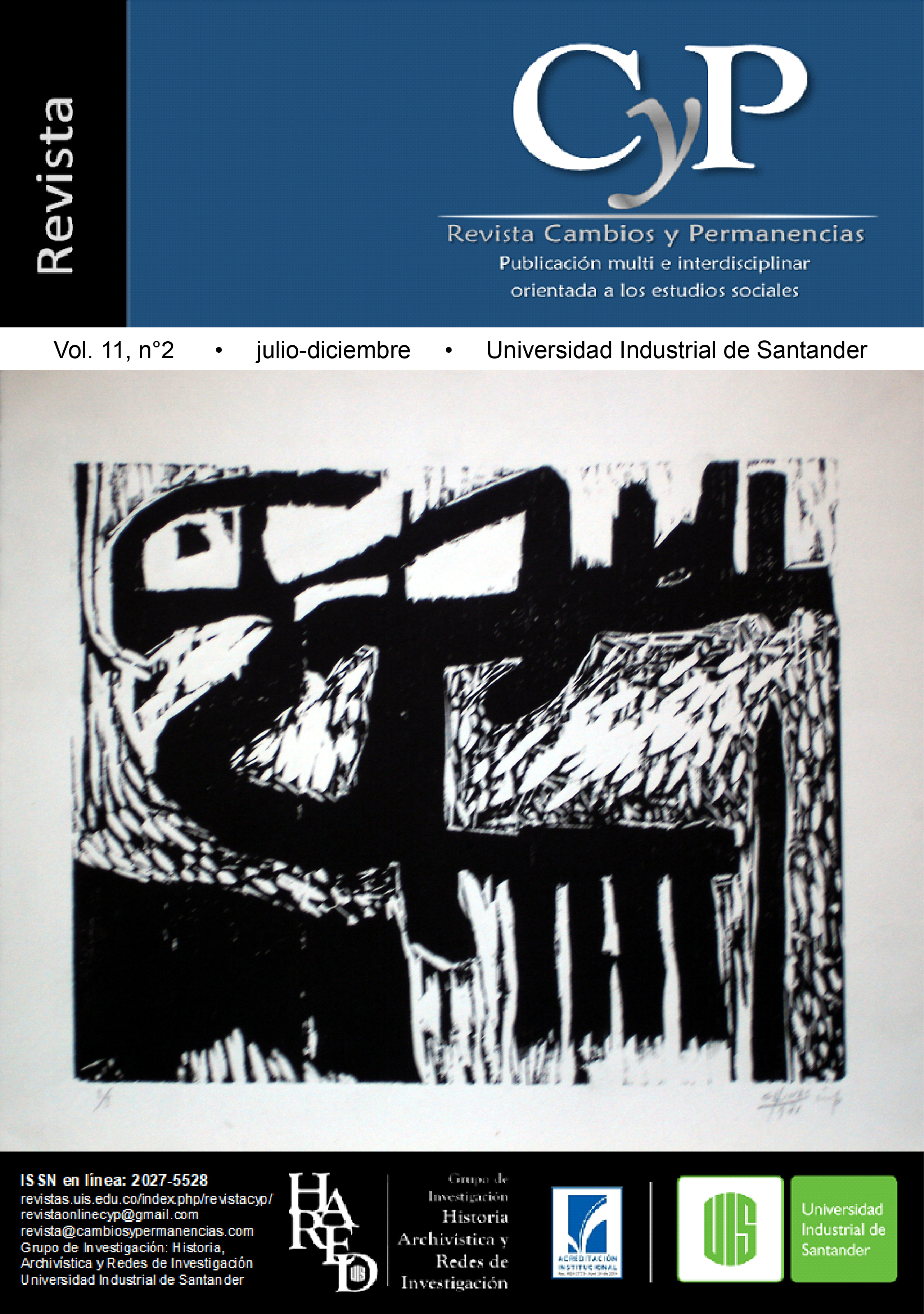Showing and hiding: audiovisual youth memories from the peripheries of Bogotá
Published 2020-12-16
Keywords
- Youth,
- Audiovisual,
- Memory,
- Peripheries
How to Cite
Abstract
This paper results from a research work based on the audiovisuals pieces produced by young people in the framework of the strategy "Semilleros de Investigación" of the District Institute for the Protection of Children and Youth (Idipron) of Bogotá from 2012 to 2014. We conducted a series of audiovisual workshops for young people to address their problems whilst producing audiovisuals pieces. Their videos reflect on the meaning of being young in the city, on the images (esto no se entiende) with a critical perspective. Countless audiovisual stories about identity, everyday life and territories emerged: practices of collective memory that combine their memories, their stories and their interests; what they feel is worth to tell, to show or to remember. With this audiovisual production, they challenge the official stories and versions that speak for them. As inputs for this text we took into account the production process and some interviews, besides their audiovisual products such as film clips, video clips, short documentaries, among others.
Downloads
References
Cabrera, M. (2006). Exceso y defecto de la memoria: violencia política, terror, visibilidad e invisibilidad. Oasis, (11), 39-55.
Coronil, F., y Skurski, J. (1991). Dismembering and remembering the nation: the semantic of political violence in Venezuela. Comparative Studies in Society and History, (33), 288-337.
Halbwachs, M. (2004). Los marcos sociales de la memoria. Barcelona, España: Anthropos.
Idipron. (2014a). ¿De quién es la calle? Ciudadanías juveniles, ciudadanías incómodas. Bogotá, Colombia: Alcaldía Mayor de Bogotá.
Idipron. (2014b). Niñez, juventud y derechos. Una lectura situada. Bogotá, Colombia: Alcaldía Mayor de Bogotá.
Idipron. (2015). En Bogotá nos Vemos. Bogotá, Colombia: Alcaldía Mayor de Bogotá.
Jaguaribe, B. (2007). “Modernidade cultural e estéticas del realismo” y “O choque do real e a experiencia urbana”. En O choque do real. Estético, midia e cultura. Rio de Janeiro, Brasil: Rocco.
Jelin, E. (2001). Los trabajos de la memoria. España: Siglo Veintiuno editores.
Jelin, E. y Kaufman, S. (2006). Subjetividad y figuras de la memoria. Buenos Aires, Argentina: Siglo XXI editora.
Pollak, M. (1992). Memoria e identidad social. Estudios Históricos, 5(10).
Rancière, J. (2005). La fábula cinematográfica. Reflexiones sobre la ficción en el cine. Barcelona, España: Paidós.
Richard, N. (2006). Políticas y estéticas de la memoria. Santiago de Chile, Chile: Editorial Cuarto Propio.
Ricoeur, P. (1999). La Lectura del Tiempo Pasado: Memoria y Olvido. España: Arrecife, Universidad Autónoma de Madrid.
Silverman, K. (2009). La mirada (look). En El umbral del mundo visible. Madrid, España: Akal.
Sontag, S. (2001) On photography. Nueva York, EE. UU: Picador.
Taussig, M. (1992). Terror as usual: Walter Benjamin Theory’s of history as a state of siege. The Nervous System, 11-36.
Taylor, D. (2003). The archive and the repertoire. Performing cultural memory in the Americas. Londres, Reino Unido: Duke University Press.
Todorov, T. (2000). Los abusos de la memoria. Barcelona, España: Paidós.
Vargas, R. (2011). Historias personales, verdad y reconocimiento: sobre los lugares del rumor en las vidas de quienes han experimentado una pérdida violenta (Tesis de maestría). Pontificia Universidad Javeriana, Bogotá, Colombia.
Vega Cantor, R. (2016). La masacre del Palacio de Justicia Ejemplo emblemático del Terrorismo de Estado en Colombia (6-7 de noviembre de 1985). El Ágora U.S.B., 16(1), 107-133. Recuperado de http://www.scielo.org.co/scielo.php?script=sci_arttext&pid=S1657-80312016000100006&lng=en&tlng=es

